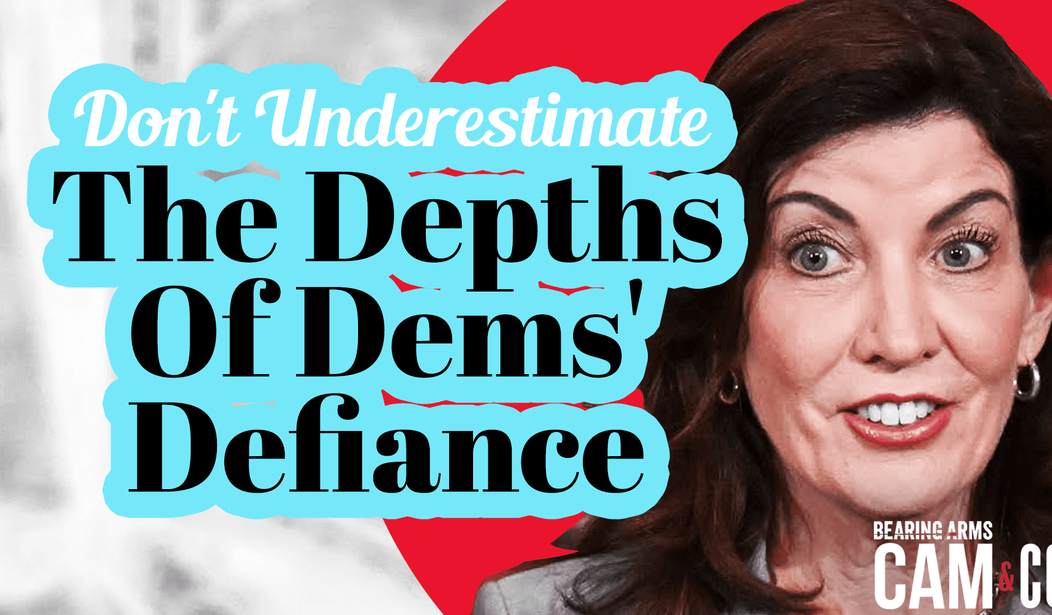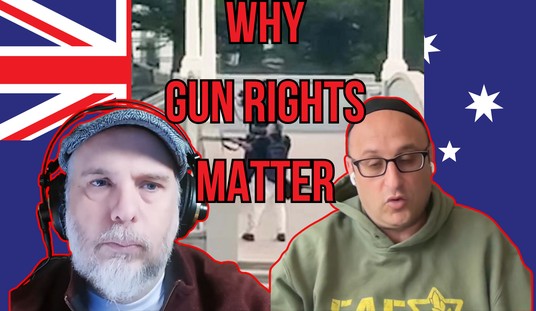I think law professor Jonathan Turley is a pretty smart guy, but after reading his column about New York’s newest gun control laws I also can’t help but think that he’s giving Gov. Kathy Hochul and the Democratic legislature far too much credit when it comes to trying to comply with the Court’s decision in NYSRPA v. Bruen.
Turley does believe that many provisions of the new anti-gun package are going to run afoul of the Constitution, but his column focuses specifically on the vast number of gun-free zones created by lawmakers through their expansive designations of “sensitive places.” Turley’s skeptical that broadly banning lawful carrying in most spaces open to the public is going to withstand court scrutiny, which I agree with. Where he loses me is the supposed rationale for the state’s anti-gun gambit.
Hochul and others are relying on a concurrence in Bruen by Justice Brett Kavanaugh, who was joined by Chief Justice John Roberts. Kavanaugh reaffirmed the language in the 2008 decision in Heller v. District of Columbia that the Second Amendment was “neither a regulatory straightjacket nor a regulatory blank check.” States and the federal government could still adopt some restrictions on firearms. He specifically noted that the list of “sensitive places” referenced in the earlier case was not “exhaustive.”
Kavanaugh’s limiting language was immediately taken as a license to bar guns by redefining places where they might be carried.
I don’t think Kathy Hochul gives a damn about Kavanaugh’s concurrence in Bruen, especially given Clarence Thomas’ clear admonition to New York in the majority opinion about trying to declare any and every place where the public might gather to be off-limits to concealed carry. From page 21 of the decision (citations omitted and emphasis mine):
Although the historical record yields relatively few 18th- and 19th-century “sensitive places” where weapons were altogether prohibited—e.g., legislative assemblies, polling places, and courthouses—we are also aware of no disputes regarding the lawfulness of such prohibitions. We therefore can assume it settled that these locations were “sensitive places” where arms carrying could be prohibited consistent with the Second Amendment. And courts can use analogies to those historical regulations of “sensitive places” to determine that modern regulations prohibiting the carry of firearms in new and analogous sensitive places are constitutionally permissible.
Although we have no occasion to comprehensively define “sensitive places” in this case, we do think respondents err in their attempt to characterize New York’s proper-cause requirement as a “sensitive-place” law. In their view, “sensitive places” where the government may lawfully disarm law-abiding citizens include all “places where people typically congregate and where law-enforcement and other public-safety professionals are presumptively available.”
It is true that people sometimes congregate in “sensitive places,” and it is likewise true that law enforcement professionals are usually presumptively available in those locations. But expanding the category of “sensitive places” simply to all places of public congregation that are not isolated from law enforcement defines the category of “sensitive places” far too broadly. Respondents’ argument would in effect exempt cities from the Second Amendment and would eviscerate the general right to publicly carry arms for self-defense that we discuss in detail below. Put simply, there is no historical basis for New York to effectively declare the island of Manhattan a “sensitive place” simply because it is crowded and protected generally by the New York City Police Department.
New York Democrats aren’t trying to comply with the Supreme Court ruling. They’re defying it. Yes, Kavanaugh’s concurrence noted that Thomas’ mention of legislative assemblies, polling places, and courthouses are not an “exhaustive” and comprehensive list, but there’s nothing in the concurrence to suggest that Kavanaugh disagrees with the idea that “sensitive places” must be the exception, and not the rule, in order not to run afoul of the general right to carry a firearm in public for self-defense.
There’s one other bit from Turley’s column that left me scratching my head in confusion; his prediction about what the Court will look to when it inevitably hears a challenge to the state’s latest gun control laws.
Simply listing most of Manhattan as a “sensitive place” will again push the constitutional envelope. It will force the court to again limit the authority of the states to shoulder the burden of balancing the individual right to gun ownership against the need to protect these places from the exercise of that right.
In answering that question, the court is likely to ask how statistically lawful gun permit owners have caused or materially increased the public safety risk in these areas. Studies have generally not shown a clear relationship between restrictive gun permit laws and a significant decrease in gun violence.
In Bruen, the majority opinion squarely rejects the interest-balancing test that Turley says the Court will be forced to confront. That’s the whole point of the “text, history, and tradition” test laid out by Thomas, who took lower courts to task for adopting the very same approach that Turley assumes the Supreme Court will embrace in the near future. From page 9 of the opinion, again with citations omitted:
Since Heller and McDonald, the two-step test that Courts of Appeals have developed to assess Second Amendment claims proceeds as follows. At the first step, the government may justify its regulation by “establish[ing] that the challenged law regulates activity falling outside the scope of the right as originally understood.”
The Courts of Appeals then ascertain the original scope of the right based on its historical meaning. If the government can prove that the regulated conduct falls beyond the Amendment’s original scope, “then the analysis can stop there; the regulated activity is categorically unprotected.” But if the historical evidence at this step is “inconclusive or suggests that the regulated activity is not categorically unprotected,” the courts generally proceed to step two.
At the second step, courts often analyze “how close the law comes to the core of the Second Amendment right and the severity of the law’s burden on that right.” If a “core” Second Amendment right is burdened, courts apply “strict scrutiny” and ask whether the Government can prove that the law is “narrowly tailored to achieve a compelling governmental interest.” Otherwise, they apply intermediate scrutiny and consider whether the Government can show that the regulation is “substantially related to the achievement of an important governmental interest.”
Despite the popularity of this two-step approach, it is one step too many. Step one of the predominant framework is broadly consistent with Heller, which demands a test rooted in the Second Amendment’s text, as informed by history. But Heller and McDonald do not support applying means end scrutiny in the Second Amendment context. Instead, the government must affirmatively prove that its firearms regulation is part of the historical tradition that delimits the outer bounds of the right to keep and bear arms.
I’m sure the progressive wing of the Court will try to bring up questions about studies on concealed carry and violent crime, and honestly, we’d win that argument on the merits as well. Concealed carry license revocation rates are far less than 1% each year, and the Crime Prevention Research Center’s amicus brief in Bruen argued that concealed carry holders actually have a lower rate of arrests and convictions for any crime than law enforcement officers.
But none of that matters, according to the Supreme Court, because the right to keep and bear arms isn’t contingent on what some study says. As SCOTUS carefully laid out, the real test is whether a particular gun control law fits within the text of the Second Amendment and the historical tradition of the right to keep and bear arms, particularly as it was seen when the Second and Fourteenth Amendments to the Constitution were ratified.
If the Court adopts the interest balancing test that it rejected in Bruen the next time it hears a Second Amendment case something has gone terribly, horribly wrong. I don’t think that’s going to be the case, but I’m curious as to what led Turley to that conclusion. Regardless, though, I’m glad the he ultimately foresees big trouble with New York’s new laws, and I agree with his conclusions even if I took a different approach to get there.









Join the conversation as a VIP Member